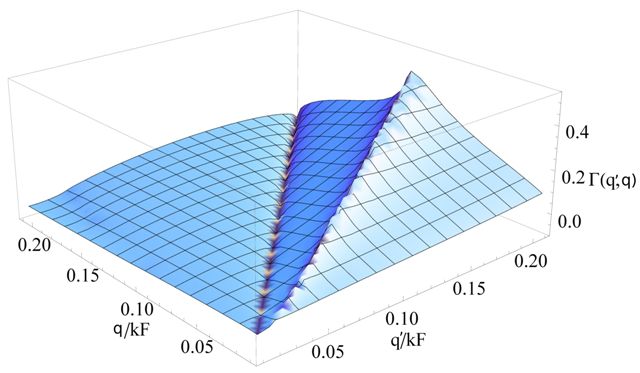Feb 4 2016
At the atomic level, bismuth displays a number of quirky physical phenomena. A new study reveals a novel mechanism for controlling the energy transfer between electrons and the bismuth crystal lattice.
 The resonant structure of electron scattering on the bismuth lattice.
The resonant structure of electron scattering on the bismuth lattice.
Mastering this effect could, ultimately, help convert waste heat back into electricity, for example to improve the overall efficiency of solar cells. These findings have now been published in EPJ B by Piotr Chudzinski from Utrecht University, the Netherlands.
The author investigates the collective motion of electrons in bismuth, which behaves in a fluid manner with waves propagating in it, a phenomenon referred to as a low energy plasmon. Electrons moving throughout the material constantly aim to preserve the same density. Bismuth exhibits two types of electrons--extremely light ones and heavier ones-- moving at different speeds. As a result, an area of less dense electron liquid is formed. In response, electrons move back to compensate at the lower density end. Yet, some of them move faster than others. And a more sparsely dense area appears in another part of the material. And so on and so forth...
This study demonstrates that the low energy plasmons, when tuned to the same wavelength as the lattice vibrations of the bismuth crystal, or phonons, can very efficiently slow lattice motion. In essence, this plasmon-phonon coupling mechanism, once intensified under specific conditions, could be a new way of transferring energy between electrons and the underlying crystal lattice.
One implication is that the plasmon-phonon coupling can help to explain a long-since observed, significant effect in bismuth: the so-called Nernst effect. This occurs when a sample is warmed on one side and subjected to a magnetic field, causing it to produce a significant electrical voltage in the perpendicular direction. Hence it turns heat into useful electricity. Within the new interpretation the Nernst effect scales up with temperature in a manner that is in line with experimental observations in bismuth, lending strong support to the theory.